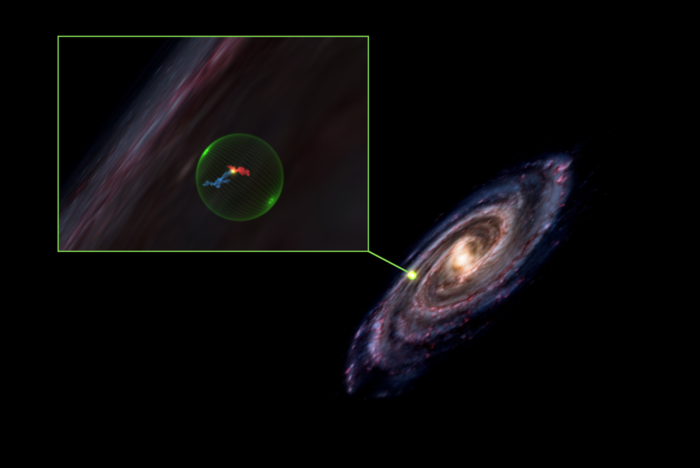A huge hole in space
About 500 to 1000 light-years from Earth, two large masses of cold cosmic matter are concentrated in space. “Cold” because they are matter in molecular form. The Perseus and Taurus molecular clouds each contain so much mass that at least 10,000 suns could form from them. Nevertheless, they are almost invisible in their entire extent, because they do not glow. The situation is different in the infrared. Heat radiation arises here, because an area concentrates more and more and gives birth to new stars.
Between these two clouds, however, there is no normal interstellar matter. Rather, astronomers have now discovered a gigantic cavity in space there. The spherical hole, described in the journal Astrophysical Journal Letters, extends nearly 500 light-years. The research team believes it was formed by ancient supernovae that erupted tens of millions of years ago.
“Hundreds of stars are forming or already exist on the surface of this huge bubble,” said Shmuel Bialy, a postdoctoral researcher at the Institute for Theory and Computation (ITC) at the Center for Astrophysics (CfA) who led the study. “We have two theories: Either a supernova exploded at the core of this bubble and pushed gas outward, forming what we now call the ‘Perseus-Taurus Supershell,’ or a series of supernovae that occurred over millions of years created it over time.”
The results suggest that the Perseus and Taurus molecular clouds are not, in fact, independent structures in space. Rather, they formed together from the same supernova shock wave. “This shows that the death of a star from a supernova triggers a chain of events that can ultimately lead to the birth of new stars,” Bialy explains.
The 3D map of the bubble and its surrounding clouds was created using new data from Gaia, a space-based observatory launched by the European Space Agency (ESA). Exactly how the 3D maps of the Perseus and Taurus molecular clouds and other nearby clouds were analyzed is described in another study published in the Astrophysical Journal (ApJ). Both studies rely on a dust reconstruction created by researchers at the Max Planck Institute for Astronomy in Germany. The maps marked the first time molecular clouds have been mapped in 3D. Previous images of the clouds were limited to two dimensions.
